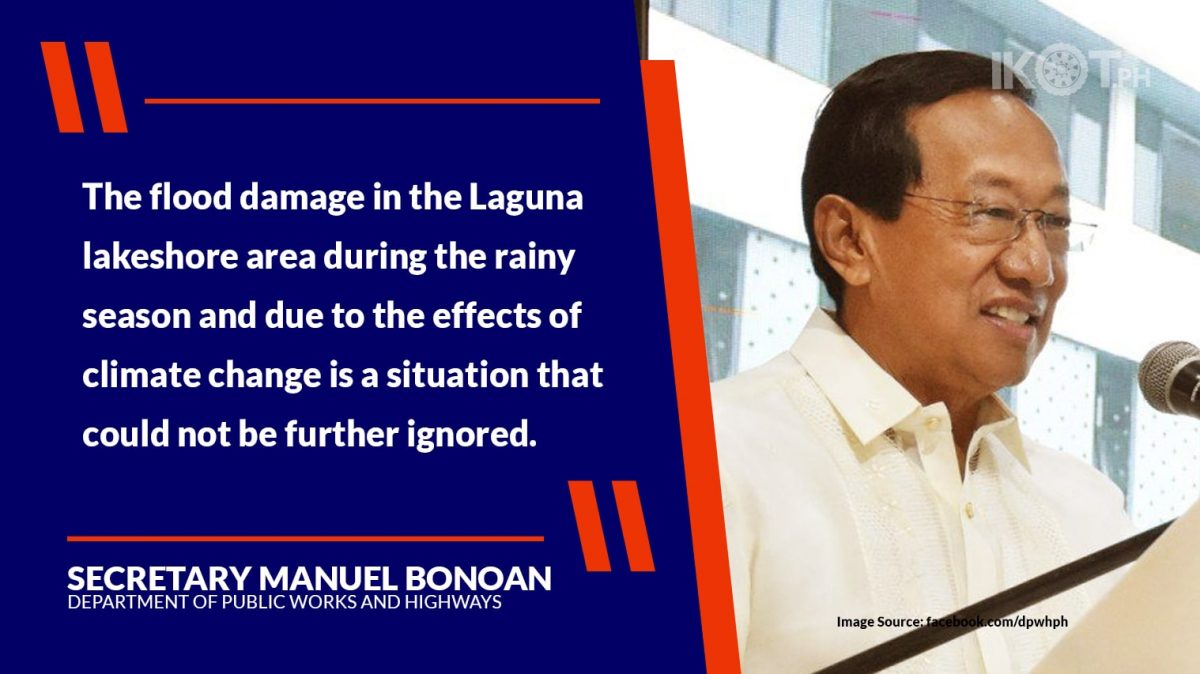Officials of the Department of Public Works and Highways (DPWH), National Economic and Development Authority (NEDA), Department of Finance (DOF), and the Japan International Cooperation Agency (JICA) mission group held a fact-finding meeting for the planned Parañaque Spillway Project in a bid to protect low-lying communities in Metro Manila from massive flooding.
Secretary Manuel Bonoan said that flood damage in the Laguna lakeshore area during rainy season and due to the effects of climate change is a situation that could not be further ignored.
The discussions with focus mainly on the project’s proposed timelines, possible financing scheme, and environmental and social considerations was participated by DPWH Senior Undersecretary Emil Sadain; Country Officer Yohei Iida and Deputy Director Nobuhiko Jaoki of JICA Southeast Asia Division 5 – Southeast Asia and Pacific Department; Project Director Ramon Arriola III and Project Manager Leonila Mercado of DPWH Unified Project Management Office – Flood Control Management Cluster (UPMO-FCMC); Executive Director Helena Habulan of DOF-International Finance Operations Office; and NEDA’s Economic Development Specialists Nathalie Tatualla, Juliene Nicolle Millares, John Rinahon and Fernando Victor Manicad III.
“The Parañaque Spillway Project is a much-needed engineering intervention to address extreme flooding by draining excess water from the Laguna Lake into Manila Bay.”
According to Sadain, the Parañaque Spillway Project is a much-needed engineering intervention to address extreme flooding by draining excess water from the Laguna Lake into Manila Bay.
“Using underground tunnel technology, this flood control option for the Laguna de Bay basin is based on the comprehensive flood management plan supported by surveys carried out by JICA experts.”
“Using underground tunnel technology, this flood control option for the Laguna de Bay basin is based on the comprehensive flood management plan supported by surveys carried out by JICA experts,” he said.
To control the water level of Laguna Lake, DPWH is proposing the construction of an underground drainage channel to catch overflowing flood water from Laguna Lake before it is pump out to Manila Bay.
The Parañaque Spillway involves the construction of open channel and tunnel with the inlet at the land side in Buli (south side of Sucat) and with the outlet at the Zapote River mouth with a maximum outflow discharge of 240 cubic meter per second.
A deep tunnel technology with an inner diameter of 13 meters having a tunnel depth that is ranging from 50 to 77 meters from the existing ground with a total tunnel length of 10.50 km.
The underground structure connecting Laguna Lake to Manila Bay will avoid spilling of lake water into low-lying communities. The project will traverse 50 meters below underground the cities of Muntinlupa, Parañaque, Las Piñas, and Bacoor City in Cavite.
With this the DPWH will be able to mitigate the inundation in the Laguna de Bay Lake shore area by draining water lake directly into Manila Bay thus stabilizing the economic and social activities in the region and earlier post disaster recovery greatly benefiting the low-lying municipalities of Laguna and Metro Manila.
The DPWH, which is mandated to implement the infrastructure development projects including the flood control works, has identified the Paranaque Spillway Construction Project as one of the priority projects in the Philippine investment plan.
The project is proposed to be funded under a JICA loan to be applied by the Government of the Philippines.


